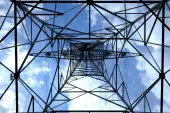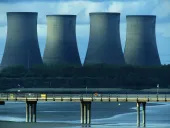Taiwan set to join offshore wind's top table by 2025
By RV AhilanThe future of offshore wind energy will combine the application of global experience and local expertise to deliver projects tailored to the needs of the market. As the industry expands beyond its origins in the European market, the power of this combination will become clearer to see.
Offshore wind success has lately been shaped by massive zero-subsidy projects. Last year, Germany awarded subsidy-free developments totalling 1.38GW to Orsted and EnBW, and in the Netherlands Vattenfall’s 700MW project will be the world’s first subsidy-free project if it is connected to the grid by its target date of 2022. These examples show how experience across the offshore wind industry has been successfully applied to propose subsidy-free projects adapted to particular market circumstances.
Away from northern Europe, however, emerging offshore wind markets are set to rapidly shake up the sector in the coming years. Foremost among these is Taiwan, which aims to build in six years an offshore wind capacity equivalent to that which it took the UK 18 years to achieve. If successful, Taiwan will catapult into the top 10 countries in terms of offshore capacity by 2025.
However, this remains a big “if,” and the Taiwanese market will need to overcome challenges of localisation of what is essentially European experience at a rapid pace to succeed. Despite this, Taiwan has the advantage of drawing on advancements in technology, finance and competitive landscapes that Europe had to develop over many years.
In particular, its Feed-in- Tariff (FiT) of US$200/MWh has caught the attention of international offshore wind players, and relationships that will secure the successful transfer of experience and best practices from the established offshore markets are being forged between local Taiwanese companies and corresponding international players on a regular basis. But if the Taiwanese offshore market is to achieve its full potential – and realise its ambitious targets – then it will need to address not only Taiwan-specific issues such as typhoons and earthquakes, but also incorporate the benefits of European experience in three key areas: regulatory and contracting; financing; and construction, operations and maintenance.
Regulatory & Contracting Issues
In addition to its strong FiT offering, Taiwan is also accelerating towards auction models similar to those that have recently been adopted in Europe and which have had a dramatic impact on cost reduction. Indeed, all capacity installation after 2020 will be awarded on the basis of an auction model. Drawing on the key learnings from Europe, Taiwan’s offshore industry will require clarity of tariff – both in amount and duration – and confidence that these tariffs will not be reneged on further down the line. Regulations related to turbine design and construction must also be transparent;
European projects witnessed a number of delays in construction as a result of piling noise restrictions that were accepted at the time but later appeared to be overly stringent.
Financing Approaches & Opportunities
While there has been significant interest from investors in Taiwan’s fledgling offshore market, there is a need for developers to create compelling business propositions that bring together equity investors, advisors and contractors at an early stage so that appropriate debt can be raised. It is clear that local financial institutions in Taiwan understand this and are partnering with European banks and the Taiwanese government to ensure that money can be raised swiftly.
This is all the more important given that financial competence forms 40% of the weighting of bidder submissions, with a quarter of that weighting related to local financial involvement. Involving local insurers and securing support from international reinsurance markets will add weight to this competence.
Construction and O&M – Design & Execution
A strong track record in construction, O&M planning and design will inform the remaining 60% weighting of submissions for offshore wind developments. Interestingly, while the Taiwanese Government has broadly encouraged localisation, this has not been explicitly considered for the first 3GW of planned capacity, in order to accelerate development. However, experience in Europe has shown that
localisation is important. In order to stay within target costs, local resolutions will be needed for issues ranging from shortages of personnel and vessels, and large scale O&M work, to problems with port infrastructure, offshore infrastructure, and grid capacities.
Once auctions replace the FiT regime, localisation will become more important. Establishing strong working relationships with local vessel owners, in particular, will best ensure the success of future repair and O&M works, especially in critical cable lay activities and foundation and turbine installations. As Taiwan’s offshore industry grows, one area in which European experience will be of little benefit is in preparing for the impact of natural catastrophe events including typhoons and earthquakes.
To date, however, both international standards, engineers and local experts have risen to the challenge, with a number of turbines successfully weathering the typhoons following their installation last year. Taiwan offshore wind is on the march. Unlike others, it has been happy to take advantage of knowledge and experience gained in Europe, and focused on aligning this with existing local expertise. Coupled with a stable legal, political and technical environment, Taiwan has all the necessary tools to overcome the remaining regulatory, financial and construction hurdles and realise its ambition of becoming one of the top 10 offshore wind markets by 2025.




















 Advertise
Advertise







